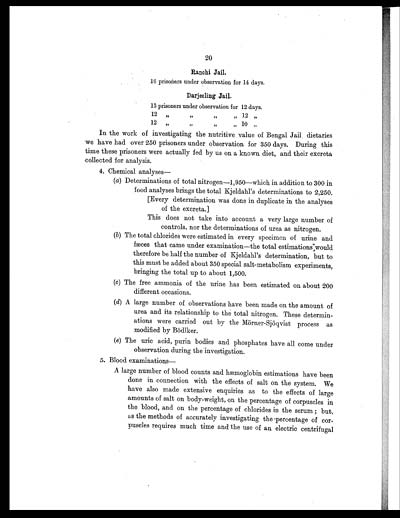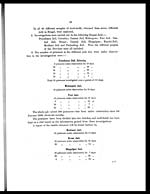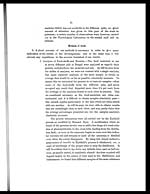Medicine - Institutions > Army health reports and medical documents > Scientific memoirs by officers of the Medical and Sanitary Departments of the Government of India > Number 37 - Investigations on Bengal jail dietaries > Front matter
(30) Page 20
Download files
Individual page:
Thumbnail gallery: Grid view | List view

20
Ranchi Jail.
16 prisoners under observation for 14 days.
Darjeeling Jail.
| 13 prisoners under observation for 12 days. | ||||||
| 12 | " | " | " | " | 12 | " |
| 12 | " | " | " | " | 10 | " |
In the work of investigating the nutritive value of Bengal Jail, dietaries
we have had over 250 prisoners under observation for 350 days. During this
time these prisoners were actually fed by us on a known diet, and their excreta
collected for analysis.
4.Chemical analyses—
(a) Determinations of total nitrogen—1,950—-which in addition to 300 in
food analyses brings the total Kjeldahl's determinations to 2,250.
[Every determination was done in duplicate in the analyses
of the excreta.]
This does not take into account a very large number of
controls, nor the determinations of urea as nitrogen.
(b) The total chlorides were estimated in every specimen of urine and
fæces that came under examination—the total estimations would
therefore be half the number of Kjeldahl's determination, but to
this must be added about 350 special salt-metabolism experiments,
bringing the total up to about 1,500.
(c) The free ammonia of the urine has been estimated on about 200
different occasions.
(d) A large number of observations have been made on the amount of
urea and its relationship to the total nitrogen. These determin-
ations were carried out by the Mörner-Sjöqvist process as
modified by Bodlker.
(e) The uric acid, purin bodies and phosphates have all come under
observation during the investigation.
5. Blood examinations
A large number of blood counts and hæmoglobin estimations have been
done in connection with the effects of salt on the system. We
have also made extensive enquiries as to the effects of large
amounts of salt on body-weight, on the percentage of corpuscles in
the blood, and on the percentage of chlorides in the serum; but,
as the methods of accurately investigating the percentage of cor-
puscles requires much time and the use of an electric centrifugal
Set display mode to: Large image | Zoom image | Transcription
Images and transcriptions on this page, including medium image downloads, may be used under the Creative Commons Attribution 4.0 International Licence unless otherwise stated. ![]()
| Permanent URL | https://digital.nls.uk/75032805 |
|---|




